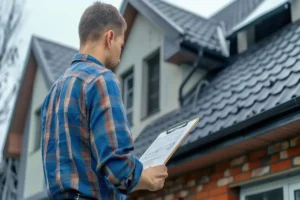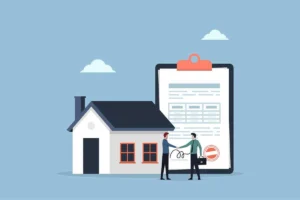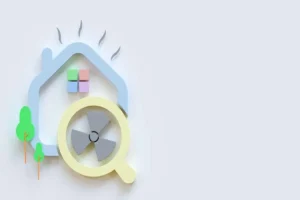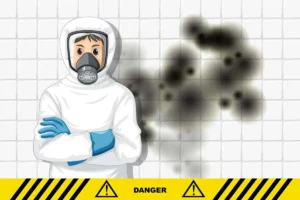
What Should I Know About Getting a Roof Inspection?
Most of the times, homeowners ignore the need of a roof inspection until they notice any problem. And because of the distrust in the roofing industry, they often find themselves with a salesman trying to sell them a new roof.
However, you can’t ever know whether you need a new roof or you should get the current one repaired, until, of course, it’s inspected. However, this is only one reason to sign up for a roof inspection, the list actually goes on and on.
Let’s explore some more reasons why you need a roof inspection, along with everything you should know about before scheduling one. We will also cover a roof inspection checklist to give you an insight into what is inspected during a roof inspection.
What Is a Roof Inspection?
A roof inspection simply evaluates the overall condition of your roof. Inspectors are dedicated to determining whether your roof is performing as it should. If it isn’t, you’ll be recommended some steps that you can undertake.
The two main reasons why you should get a roof inspection are:
- To learn how much life your roof has left. This helps determine whether you should get a replacement or repair.
- To determine whether your roof has a leak.
However, it’s better to inspect your roof if it’s damaged by a storm, if you’re planning to buy or sell a property, or during routine maintenance.
Roof Inspection Checklist
A roof inspection checklist involves everything that checks your roof’s entire condition and functionality. Here’s what a roof inspection usually covers:
Number of Layers
The first thing a roofer inspects is the number of layers on your roof. If you need a new roof, this helps determine how many extra layers will need to be torn off.
In addition, when inspecting for a roof leak, identifying the number of layers helps in tracking down the source for repairs. Most houses have roofs with three or four layers, but you’re allowed to have two layers, maximum. This is for fire safety reasons.
Drip Edge
Once the number of layers is checked, the roofers will also ensure your roof has a drip edge. This is installed at the edges of your roof to keep water away from your fascia and prevent it from getting underneath your roofing components.
It is an important component, and often, building codes require installing a drip edge correctly. So, if your roof’s drip edge is not installed correctly, it might also not be up to code without it.
Roof Decking
The wooden foundation of your entire roof system is called roof decking. Once the roofer is on your roof, they will test whether the decking is spongy or solid underneath their feet.
However, knowing the exact condition of your decking is impossible without tearing off shingles. Compromised decking must be replaced during the roof replacement process.
Roofing Material
This is one of the major things checked during a roof inspection, as it makes up the bulk of your roof. Roofers will examine the condition to determine the life of your roof and look for any potential problems that need to be addressed.
Roof Penetrations, Skylights, and Chimneys
Anything that’s sticking out through your roof is a roof penetration. It could be gas vents, chimneys, vent pipes, roof vents, etc. Since they come through your roof, they must be sealed to prevent water from getting into your home.
During the roof inspection, all penetrations, chimneys, and skylights (if you have them) are inspected. This helps in ensuring they’re fully leak-free and sealed. Besides this, the roofers will check the condition of the mortar and chimney cap on chimneys.
Roof Flashing
This is an important metal component installed in areas that butt up against a wall, open valleys, or chimney to prevent leaks. This is one of the most important things that is checked during the inspection. A roofer will make sure it’s not rusted and that the integrity of the metal is holding strong.
Gutters and Downspouts
Yes, they’re not technically on your roof, but they will be checked during a roof inspection. Roofers will look for cracks, blockages, and open seams that might hinder drainage. They’ll also look for standing water, which helps determine whether gutters are tilted in the wrong direction.
Attic Space
The attic ventilation system is very important for your home and roof. Without proper attic ventilation, the trapped air increases your home’s energy bill and shortens your roof’s lifespan.
During the inspection process, a roofer will get into your attic to determine its ventilation. They will check the bottom of your roof decking for discoloration. This helps them determine whether there’s excess moisture or even a leak coming through.
How Long Does A Roof Inspection Take?
Usually, a roof inspection takes about 1-2 hours, but the exact time depends on its size, complexity, and accessibility. Also, the reason why you’re getting a roof inspection also impacts its duration.
If you’re getting an inspection for roof replacement then it might take around a couple of hours. But, it can take longer if your roof is complex and multiple stories off the ground. If the roof inspection is for determining the storm damage, then it takes more time because they document the roof and collateral damage around your property.
Conclusion
In conclusion, a roof inspection is a vital part of home maintenance that helps you stay ahead of potential issues before they become costly repairs. Whether you’re preparing to buy or sell a home, suspect damage after a storm, or simply staying on top of routine maintenance, a thorough inspection gives you peace of mind and helps extend the life of your roof.
Understanding what’s included in a roof inspection can help you make informed decisions about repairs or replacement. Don’t wait for visible signs of damage—schedule a roof inspection regularly to protect your investment for years to come.
Ready to ensure your entire home is safe and sound? Schedule your home inspection with Peace of Mind Home Inspections today—because your peace of mind is our top priority.

 Previous Post
Previous Post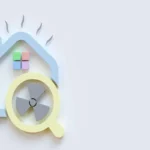 Next Post
Next Post